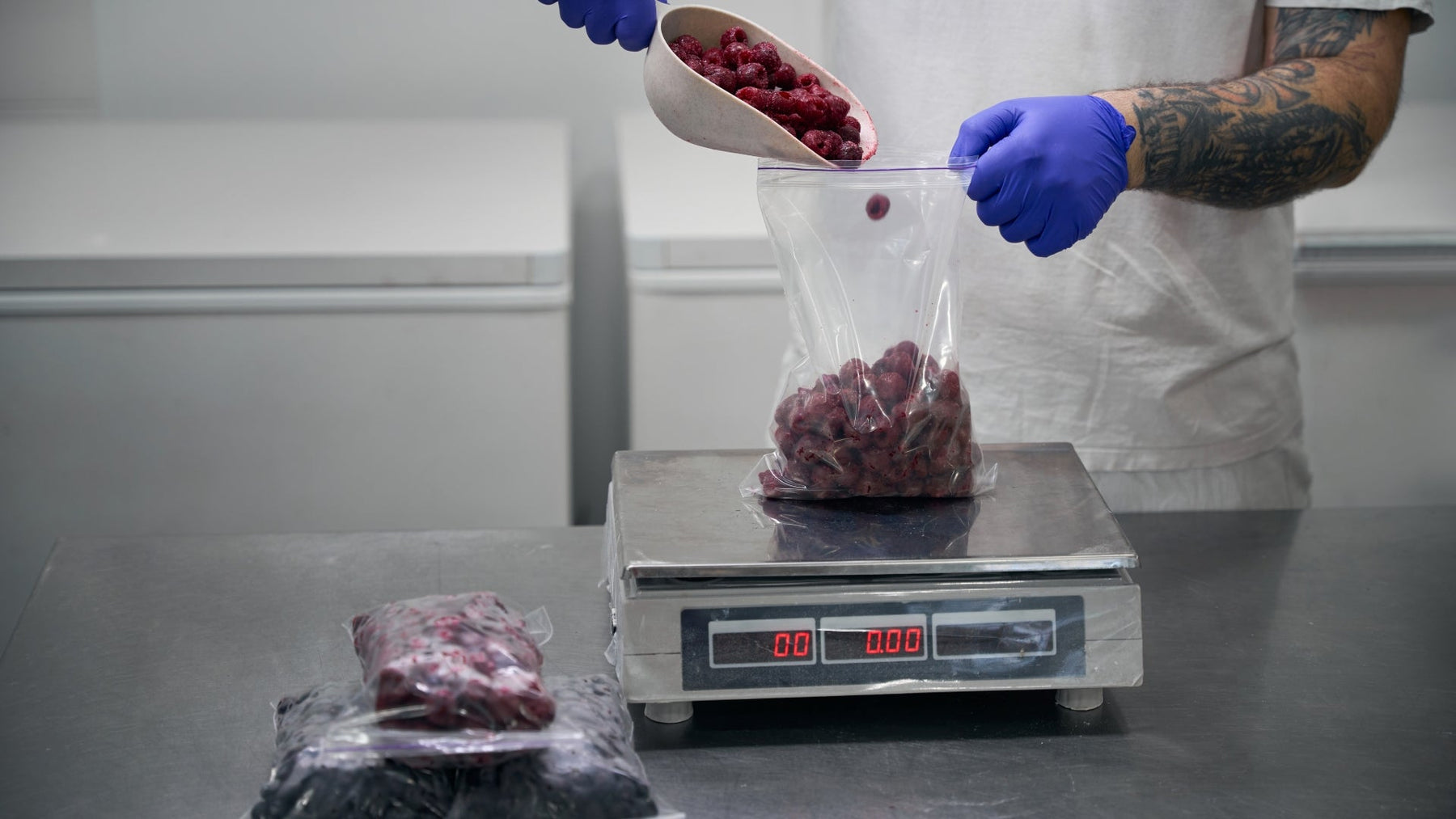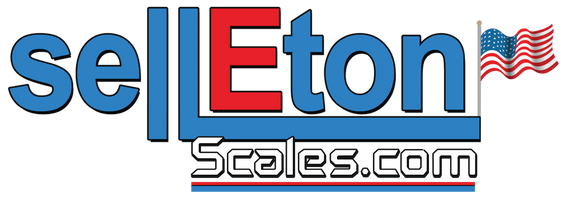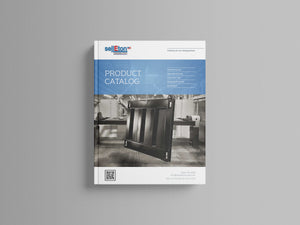
Sanitizable Scale: Essential Equipment for Hygienic Weighing Applications
In industries where contamination can mean the difference between safety and disaster, every piece of equipment must meet stringent hygiene standards. A sanitizable scale represents a critical investment for facilities that prioritize food safety, patient health, and regulatory compliance. Unlike conventional weighing equipment, these specialized scales are engineered with materials and design features that enable thorough cleaning and disinfection, making them indispensable in environments where measuring hygiene behavior and preventing cross-contamination are paramount.
The growing concern about antimicrobial resistance and foodborne illness rates has elevated the importance of proper sanitation protocols across multiple industries. When facilities fail to maintain adequate hygiene standards, the consequences extend far beyond regulatory fines—they can include product recalls, facility shutdowns, and serious health complications for end users.
This comprehensive guide examines everything you need to know about sanitizable scales, from their unique design features to proper cleaning procedures and cost-benefit analysis. Whether you’re managing a food processing facility, healthcare institution, or pharmaceutical manufacturing operation, understanding these specialized weighing instruments is essential for maintaining both safety and compliance.
What is a Sanitizable Scale
A sanitizable scale is weighing equipment specifically designed for easy cleaning and disinfection in environments requiring strict hygiene standards. These specialized instruments differ fundamentally from standard scales through their construction materials, surface properties, and design features that minimize bacterial adhesion and biofilm formation.
The substrate surface of a sanitizable scale typically consists of high-grade stainless steel, specifically 316L, which offers superior corrosion resistance compared to standard materials. This material composition prevents bacterial cells from establishing colonies on the surface, while the smooth surface topography reduces the likelihood of bacterial growth in microscopic crevices.
Key characteristics that distinguish sanitizable scales include seamless construction, IP-rated waterproof enclosures, and removable components for thorough cleaning access. These features are not merely conveniences—they represent essential design elements that enable compliance with FDA, NSF, and HACCP regulations governing food contact surfaces and medical equipment.
The underlying mechanisms of sanitization effectiveness rely on eliminating bacterial adhesion points and enabling complete removal of organic residues. Previous studies have demonstrated that conventional scales with painted surfaces or inadequate sealing can harbor dangerous pathogens, making thorough sanitization nearly impossible.
Why Sanitizable Scales Are Critical
The implementation of sanitizable scales addresses a major issue in contamination control across multiple industries. These specialized weighing devices play a crucial role in preventing cross-contamination between different products, patients, or research samples, thereby protecting against antimicrobial resistance development and foodborne illness outbreaks.
In healthcare facilities, measuring hygiene behavior and maintaining sterile conditions during medication preparation requires equipment that can withstand repeated disinfection cycles. A single contaminated scale can compromise an entire batch of compounded medications, potentially affecting multiple patients and creating liability concerns.
Food processing environments face equally stringent requirements, where a contaminated scale could introduce pathogens like staphylococcus aureus or escherichia coli into products destined for consumer consumption. The cost of a single recall event often exceeds the investment in proper sanitizable equipment by orders of magnitude.
Regulatory compliance represents another critical factor driving adoption. The FDA’s CFR Title 21 regulations mandate that food contact surfaces must be designed for adequate cleaning and sanitizing. Facilities using non-compliant equipment risk regulatory action, including warning letters, facility inspections, and potential shutdowns.
The effectiveness of sanitizable scales in reducing contamination incidents has been statistically significant in controlled studies. Facilities implementing comprehensive sanitization protocols, including proper weighing equipment, report substantial reductions in contamination events and improved audit scores from regulatory agencies.
Design Features That Enable Sanitization
The material surface characteristics of sanitizable scales are engineered to resist bacterial colonization and facilitate thorough cleaning. Stainless steel 316L serves as the primary construction material due to its exceptional corrosion resistance and smooth finish that minimizes surface roughness where bacteria might harbor.
Seamless construction eliminates crevices and joints where organic matter can accumulate and bacterial adhesion can occur. Traditional scales often feature bolted assemblies or welded seams that create microscopic harborage points, but sanitizable designs employ continuous welds and smooth transitions to create a uniform surface topography.
Waterproof ratings of IP66 or IP67 allow these scales to withstand high-pressure washdown procedures without compromising internal electronics. This capability permits unrestricted use of standard cleaning protocols, including steam cleaning and chemical sanitizers, without risk of equipment damage.
The antibacterial properties of properly designed sanitizable scales extend beyond material selection to include specialized surface treatments. Some manufacturers apply antibacterial coatings that create reactive oxygen species when exposed to moisture, providing additional bactericidal activity against common pathogens.
Removable components, such as weighing platforms and drip trays, enable access to all areas requiring cleaning. This design approach ensures that no surface remains inaccessible during sanitization procedures, a critical factor in preventing biofilm formation and bacterial growth.
Industries and Applications
Healthcare facilities represent a primary market for sanitizable scales, where personal hygiene and infection control protocols demand equipment capable of withstanding frequent disinfection. Hospital pharmacies use these scales for compounding sterile preparations, while patient care areas require scales that can be thoroughly sanitized between uses to prevent healthcare-associated infections.
Food processing plants utilize sanitizable scales throughout production lines, from ingredient receiving to final packaging. The ability to measure precise quantities while maintaining sanitary conditions is essential for both product quality and regulatory compliance. These facilities often operate under HACCP plans that specify cleaning frequencies and methods for all food contact equipment.
Restaurant kitchens and commercial food service operations rely on sanitizable scales for portion control and recipe adherence. The high-speed nature of commercial food preparation, combined with frequent cleaning requirements, demands equipment that can withstand intensive use and repeated sanitization cycles.
Pharmaceutical manufacturing presents unique challenges where even minute contamination can compromise product efficacy. Sanitizable scales used in these environments must meet cleanroom standards while providing the precision necessary for active ingredient measurement and quality control testing.
Laboratory environments across various industries require scales that can be thoroughly decontaminated between different samples or experiments. Whether testing food samples for pathogens or preparing research compounds, the ability to prevent cross-contamination through proper equipment sanitization is essential for accurate results.
Veterinary clinics increasingly recognize the importance of sanitizable weighing equipment in preventing disease transmission between animal patients. The ability to quickly and thoroughly clean scales between examinations reduces infection risks while maintaining accurate medication dosing protocols.
Sanitization Standards and Compliance
FDA CFR Title 21 establishes fundamental requirements for food contact surfaces, mandating that such equipment must be designed for adequate cleaning and sanitizing. These regulations specify that surfaces must be smooth, non-porous, and free from cracks or crevices that could harbor bacteria or impede cleaning efforts.
NSF International standards provide detailed criteria for commercial food equipment design and construction. NSF Standard 3, while primarily focused on commercial dishwashing equipment, establishes principles applicable to sanitizable scales, including minimum sanitizing temperatures and material specifications for corrosion resistance.
ISO 14159 offers specific guidelines for hygiene requirements in weighing equipment used in food production. This standard addresses design considerations that facilitate cleaning, including accessibility of all surfaces, drainage capabilities, and material compatibility with common sanitizing agents.
USDA FSIS regulations governing meat and poultry processing facilities require that all equipment contacting food products must be constructed and maintained to prevent adulteration. This includes specifications for materials, surface finishes, and cleaning accessibility that directly impact scale design requirements.
EU Regulation 852/2004 establishes food hygiene requirements across European markets, emphasizing the importance of equipment design in maintaining food safety. These regulations influence global equipment standards, as manufacturers often design products to meet the most stringent requirements for international market access.
Compliance validation requires documented evidence that cleaning procedures effectively remove contaminants and reduce microbial populations to safe levels. This documentation often includes ATP testing, microbial sampling, and visual inspections to verify sanitization effectiveness.
Types of Sanitizable Scales
Bench scales with stainless steel platforms represent the most common type of sanitizable weighing equipment. These versatile instruments serve applications ranging from ingredient portioning in commercial kitchens to sample preparation in laboratory environments. Their compact design facilitates easy relocation for cleaning while maintaining accuracy specifications required for precise measurement.
Floor scales designed for heavy-duty washdown applications address the needs of large-scale food processing operations. These robust instruments can withstand aggressive cleaning procedures, including steam cleaning and high-pressure water jets, while maintaining calibration accuracy under harsh environmental conditions.
Portion control scales specifically designed for food service applications combine sanitizable construction with features that enhance operational efficiency. Many models include preset tare functions, programmable portion sizes, and integrated printers for documentation requirements, all while maintaining surfaces compatible with frequent sanitization.
Analytical balances with enclosed chambers provide precision weighing capabilities in laboratory environments where both accuracy and contamination control are critical. These sophisticated instruments often feature internal calibration mechanisms and environmental protection systems that maintain performance while permitting thorough sanitization.
Hanging scales for meat processing and butcher shops offer specialized solutions for industries requiring both sanitary design and specific functionality. These scales must withstand the corrosive environment of meat processing while providing accurate measurements for portion control and pricing applications.
Checkweigher systems integrated into production lines combine automated weighing with sanitizable design principles. These high-speed systems enable continuous monitoring of product weights while maintaining the hygienic standards required for food processing operations.
Proper Cleaning and Maintenance Procedures
Daily cleaning protocols form the foundation of effective sanitization, requiring systematic disassembly and cleaning of all accessible surfaces. The handwashing technique employed for scale surfaces should follow established procedures, beginning with removal of visible soil and debris, followed by application of detergent solutions to break down organic films.
Step-by-step disassembly procedures ensure thorough access to all surfaces requiring sanitization. Removable components such as weighing platforms and drip trays should be completely detached, enabling separate cleaning and inspection. This approach prevents the formation of biofilms in inaccessible areas where bacteria might establish resistant colonies.
Compatible cleaning chemicals include quaternary ammonium compounds, which provide broad-spectrum antimicrobial activity against both gram-positive and gram-negative bacteria. The selection of appropriate sanitizing agents must consider material compatibility, contact time requirements, and concentration specifications to achieve effective bactericidal properties without damaging equipment surfaces.
Validation procedures verify that cleaning methods achieve the intended level of microbial reduction. These protocols typically include pre- and post-cleaning microbial sampling, using methods such as swab testing or ATP measurement to quantify cleanliness levels. Such validation helps ensure that the antibacterial mechanism of the cleaning process is functioning effectively.
Preventive maintenance schedules must account for the additional wear imposed by frequent cleaning cycles. Regular inspection of seals, gaskets, and surface integrity helps identify potential issues before they compromise sanitization effectiveness. The membrane damage that can occur from aggressive cleaning requires monitoring to prevent contamination ingress.
Documentation requirements for regulatory compliance include detailed records of cleaning procedures, chemical concentrations, contact times, and validation results. This documentation provides evidence of due diligence in contamination prevention and supports regulatory compliance during inspections.
Selection Criteria for Sanitizable Scales
Capacity and readability requirements must align with specific application needs while considering the accuracy degradation that can occur in harsh cleaning environments. High-precision applications may require instruments with enhanced environmental protection to maintain performance specifications despite frequent sanitization cycles.
Environmental conditions including temperature fluctuations, humidity levels, and chemical exposure influence material selection and design requirements. Scales operating in cold storage environments face different challenges than those in heated processing areas, requiring consideration of thermal cycling effects on calibration stability and surface integrity.
Frequency of cleaning and sanitization cycles directly impacts equipment specification requirements. Operations requiring multiple daily cleaning cycles need more robust construction and enhanced corrosion resistance compared to facilities with less frequent sanitization schedules. The cost of maintenance and replacement must be factored into the total ownership calculation.
Budget considerations extend beyond initial purchase price to include installation, training, validation, and ongoing maintenance costs. While sanitizable scales typically command a premium over standard equipment, the investment often proves economical when considering contamination prevention benefits and regulatory compliance requirements.
Integration with existing hygiene protocols requires compatibility with established cleaning chemicals, procedures, and scheduling. Equipment selection should consider how new scales will fit into current workflows without disrupting established contamination control measures or requiring extensive procedure modifications.
Vendor support for validation and compliance documentation can significantly impact implementation success. Manufacturers who provide comprehensive validation packages, cleaning protocols, and regulatory guidance help ensure successful integration while reducing the burden on facility personnel.
Cost-Benefit Analysis
Initial investment in sanitizable scales typically ranges 20-40% higher than comparable standard weighing equipment, reflecting the premium materials, specialized construction, and additional testing required for hygienic design certification. This upfront cost must be evaluated against the potential consequences of contamination incidents and regulatory non-compliance.
Reduced contamination risk provides substantial value through prevention of product recalls, facility shutdowns, and liability claims. A single major contamination incident can cost thousands of times more than the premium paid for proper sanitizable equipment, making this investment one of the most cost-effective risk mitigation measures available.
Lower long-term maintenance costs result from the corrosion resistance and robust construction of sanitizable scales. The stainless steel construction and sealed electronics resist degradation from cleaning chemicals and moisture exposure, often extending equipment lifespan significantly compared to standard alternatives.
Compliance benefits include avoiding regulatory fines, warning letters, and facility shutdowns that can result from inadequate sanitation equipment. The cost of regulatory remediation, including facility modifications and enhanced monitoring programs, often exceeds the initial investment in proper equipment by substantial margins.
Extended equipment lifespan through proper sanitization practices and robust construction provides additional value through reduced replacement frequency. Quality sanitizable scales often operate effectively for decades when properly maintained, delivering superior return on investment compared to standard equipment requiring more frequent replacement.
The development of more sophisticated sanitizable scale technology continues to improve the value proposition, with enhanced features such as automated cleaning validation, integrated data logging, and improved materials offering additional benefits that justify premium pricing for many applications.
Efficiency gains from streamlined cleaning procedures and reduced downtime for equipment maintenance provide additional economic benefits. Facilities report productivity improvements when switching to properly designed sanitizable equipment that enables faster, more effective cleaning cycles without compromising thoroughness.
When evaluated comprehensively, the data consistently demonstrates that investing in quality sanitizable scales provides positive returns through risk reduction, compliance assurance, and operational efficiency improvements. The question for most facilities is not whether to invest in sanitizable equipment, but rather which specific features and capabilities provide the best value for their particular application requirements.
Organizations considering this investment should conduct a thorough assessment of their current contamination risks, regulatory requirements, and operational constraints to identify the optimal balance of features, performance, and cost. The method of evaluation should include consultation with regulatory experts, equipment vendors, and industry peers to ensure all relevant factors are properly considered in the decision-making process.

